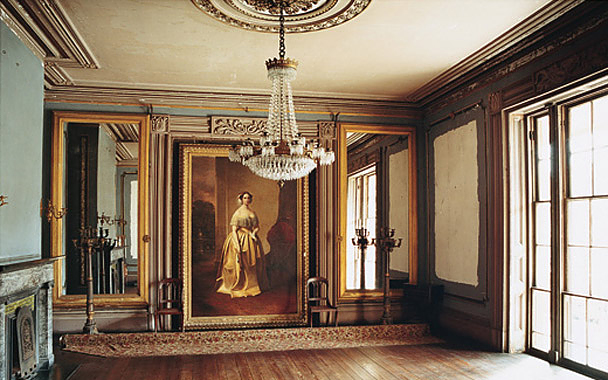In late October, Charleston, South Carolina, was in the throes of a charcuterie revolution. Of course, it was possible—easy, in fact—to find fried green tomatoes, fried oysters, and fried flounder, too, but plates of house-cured meats were featured on a few of the more daring restaurant menus around town, and they were causing some excitement. Not along the lines of, say, girls at The Citadel or that serious commotion at Fort Sumter in 1861, but excitement just the same. Change comes slowly to the South.
In Charleston sitting rooms, you can still hear the Civil War referred to as the War Between the States, and homeowners can be reprimanded by historical fundamentalists for veering a few shades away from the original paint color on the exterior of their antebellum mansions. Yet somehow, in an enduring swell of proud preservation (from the pre-Revolutionary Powder Magazine, one of the oldest fortifications in the 13 colonies, to the scholarly and modern Charleston Renaissance Gallery), the city’s culinary heritage was besmirched, or at least belittled, by popular demand. For fried fish.
By now, the storied city is a blockbuster tourist destination whose reputation as a beautiful living museum has (perhaps) eclipsed the Confederate flag controversies. Its fortunes built long ago on rice and cotton, today it hosts Spoleto, the internationally acclaimed annual arts festival; it opted for a design for the new bridge over the Cooper River that would do Santiago Calatrava proud; it spawned Stephen Colbert (insert joke here). And while the roster of good restaurants has grown steadily, like the number of hotel rooms and pedicabs, the tourist traps cast a pall. It’s impossible to miss the throngs spilling out of the Noisy Oyster or the lines to get into Hyman’s Seafood—waiting for the food, that is, not for an “I Got Crabs at Hyman’s” T-shirt. Nonetheless, Charleston is shaking off its gastronomic inferiority complex and forging an identity of its own. (And it must be said that the city has benefited from New Orleans’s misfortunes.)
It’s not just shrimp and grits, though there are very good shrimp and grits to be had. Particularly at Slightly North of Broad (better known as S.N.O.B.), where the pioneering Frank Lee—that’s him in the open kitchen wearing a baseball cap with red chiles on it—tosses in big pieces of sausage for a hearty version that pleases the busy lunch crowd of bankers, lawyers, and politicians. (A longtime New Yorker who has started spending half her time in town calls S.N.O.B. “the ‘21’ Club of Charleston.”) Robert Stehling, chef-owner of the homey Hominy Grill and winner of the 2008 James Beard award for Best Chef in the Southeast, has a more refined take that uses bacon and a combination of sharp white Vermont Cheddar and parmesan cheese. Fans wait patiently on the sidewalk on a still-ungentrified northern part of Rutledge Avenue for the dish, unperturbed by a couple of protesters picketing a proposed Planned Parenthood clinic across the street. Neither chef is rewriting Charleston Receipts, but both have changed expectations. Their shrimp come from shrimpers they know by first name; their grits (or hominy, as the coarsely ground corn is more politely known among the old families in town) are milled by artisans to their preferred specifications; they have tried to get as far away from the industrial food chain as possible; and they’ve helped drive a consistent availability of local ingredients. Now, when an ambitious southern chef with Per Se on his résumé returns home to take over an established kitchen (see Jeremiah Bacon, at Carolina’s), he’s got the raw material to work with.
As Glenn Roberts, founder of Anson Mills, in Columbia, South Carolina, points out, the region’s agricultural bounty and diversity is comparable to that of Northern California and some parts of Europe. (“It’s hard for people to believe,” he says, “but there are olive trees on Folly Island.”) Finally, there are some chefs in Charleston adept enough to take what’s representative, put their imprint on it, and contribute to the collective identity. “It’s a sorority,” as Bob Waggoner, who was the chef at the Charleston Grill until this past January, calls the small vanguard.
In Waggoner’s shiny dining room, with a view of a big Gucci sign inside the shopping halls of the Charleston Place Hotel, there was a whiff of haute Vegas (and prices to match) but also an ambitious menu that has been taken over by his executive sous-chef, Michelle Weaver (an actual woman in the otherwise male “sorority”). Time will tell how economics and style are going to affect the restaurant’s Carolina pheasant breast, or, according to season, flounder with lima beans, but, for now, female ascendancy is exciting in itself. Another crowd-pleasing chef, Ken Vedrinski, has left Sienna, on Daniel Island, to set up a place in the old Johnson & Wales building downtown (called Ristorante Introdacqua, it should be open by late summer); he combines an Italian sensibility with Lowcountry ideas to make modern dishes like piccata of grouper with a spicy blue-crab marinara. Last fall, he opened Trattoria Lucca, Charleston’s answer to a casual Mario Batali place, on an unlikely residential corner away from the tourist traps, and the natives came running.



 Pinterest
Pinterest






